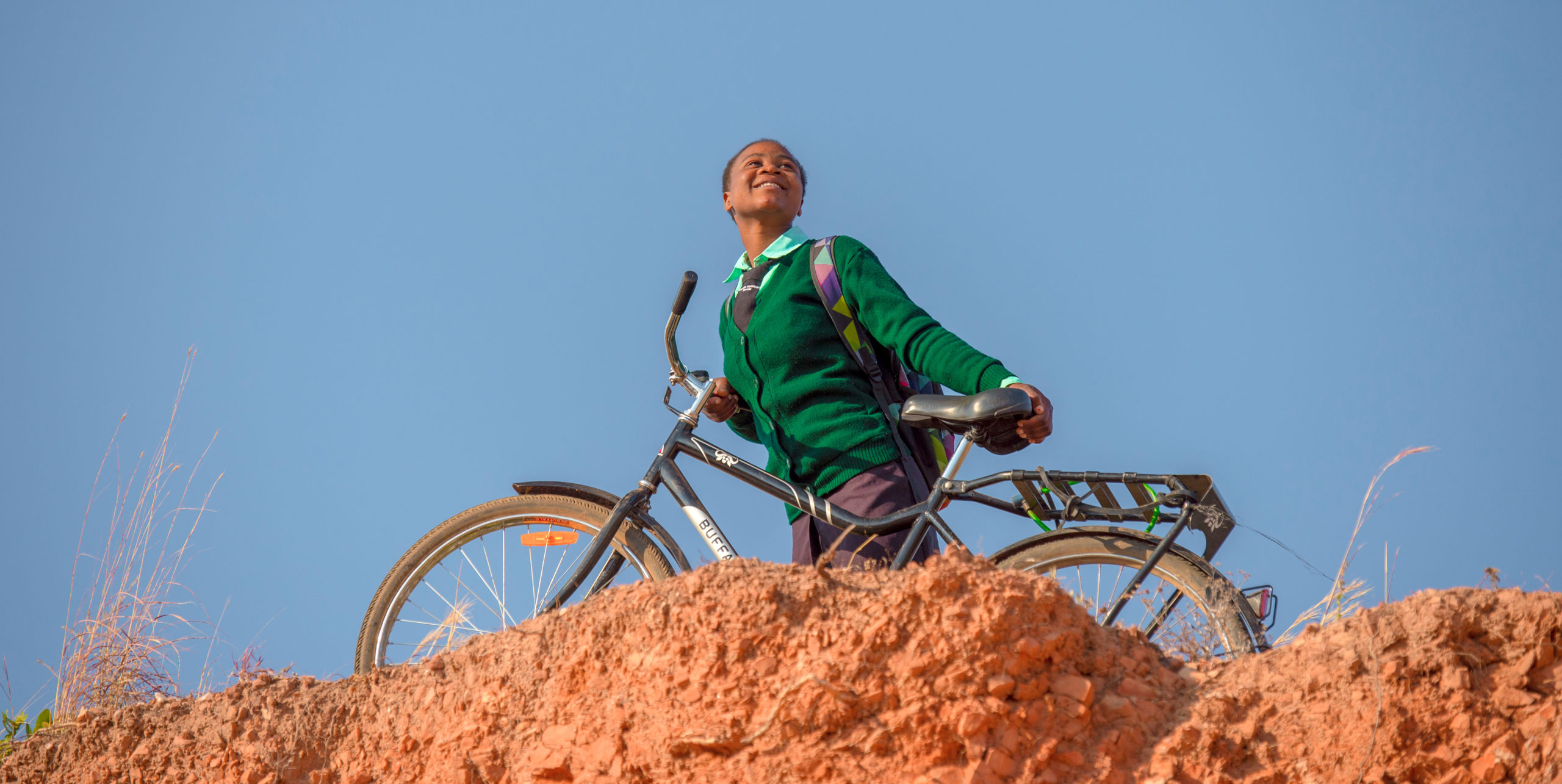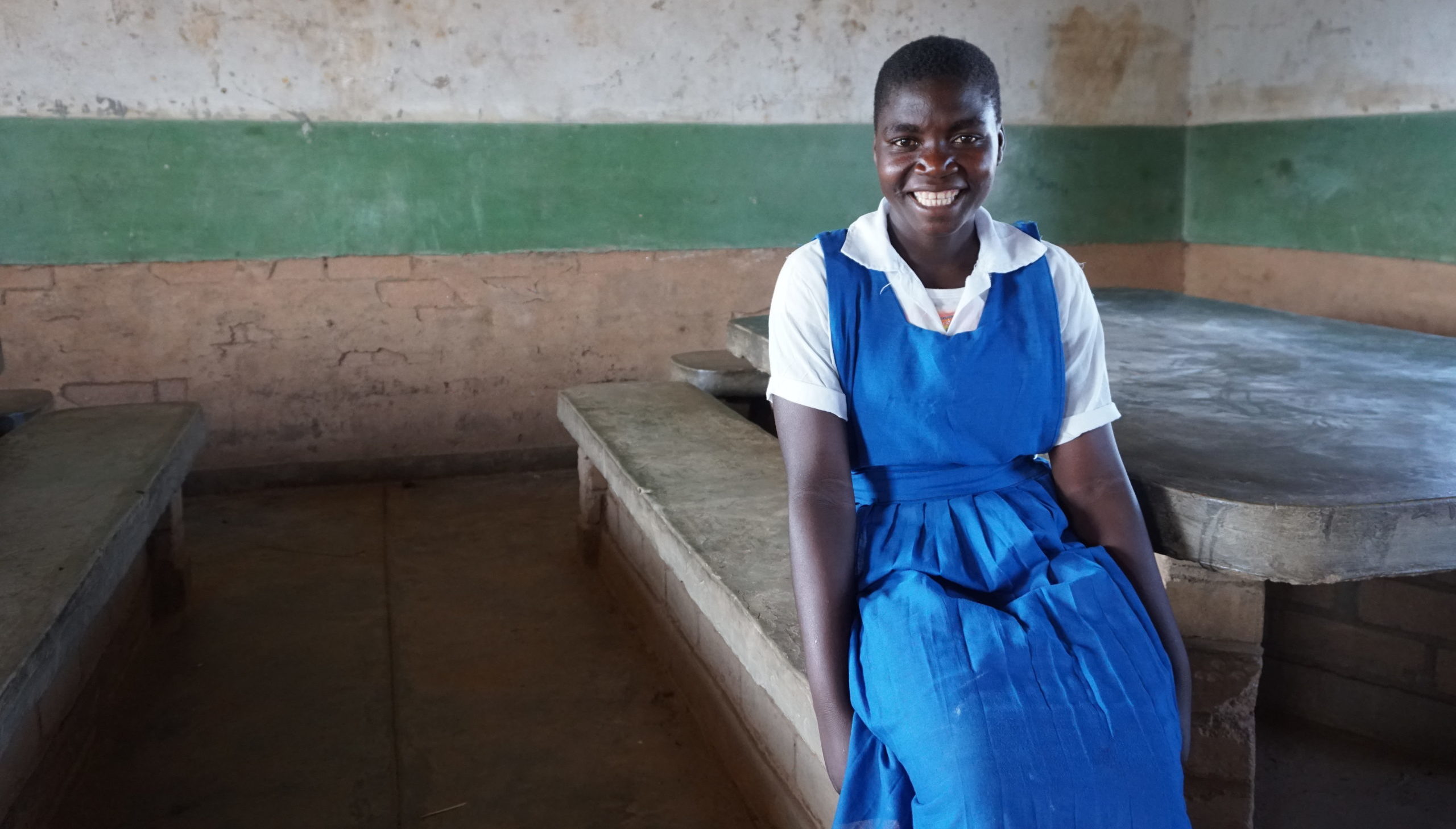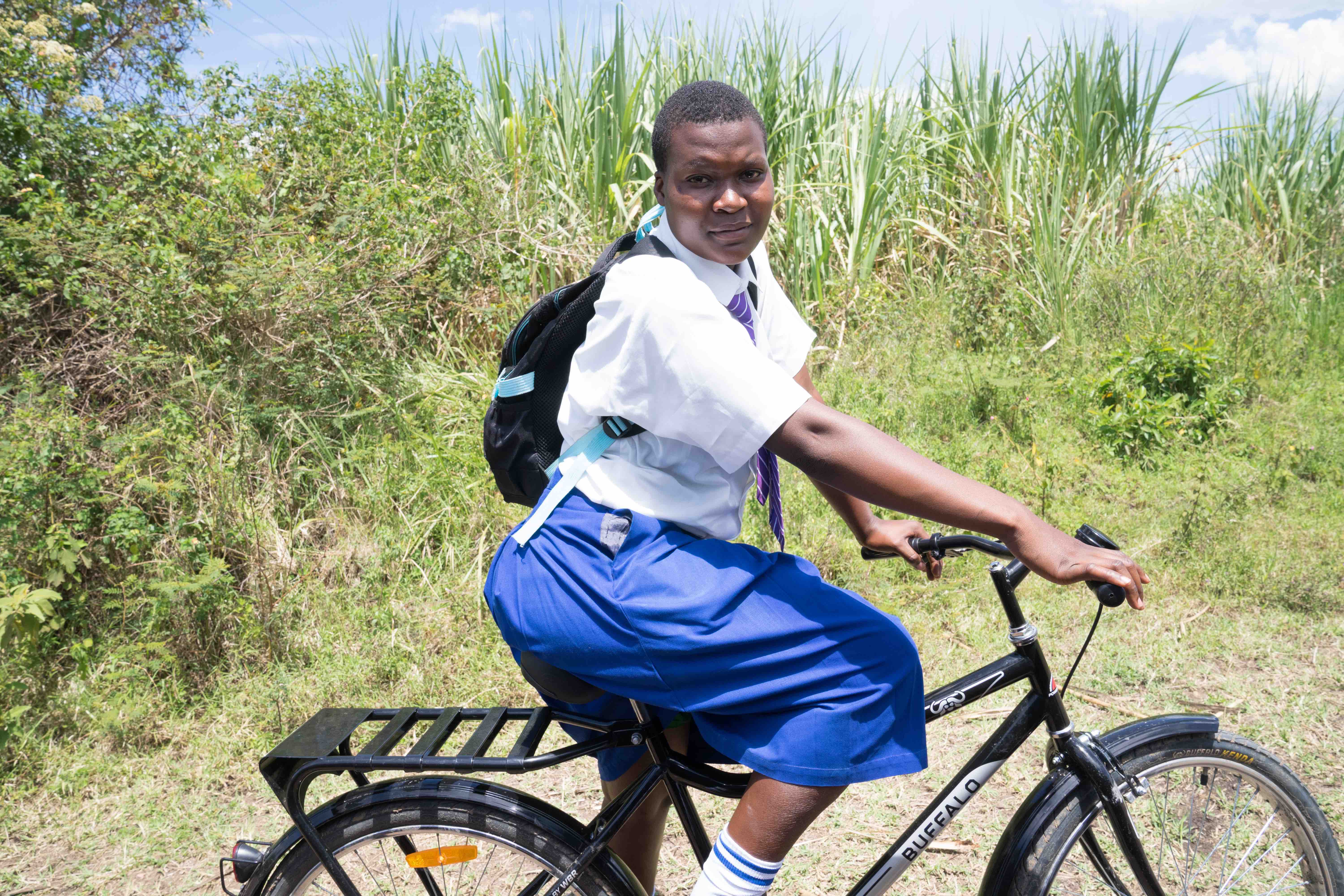How Bicycles Are Mobilizing Girls to Reimagine Their World
Like many girls in rural Africa who become pregnant at an early age, 19-year-old Stella dropped out of school.
Yet, her family’s future depends on her getting an education, which would give her the opportunity to earn a higher income, lead a more healthy, productive life, and play a larger role in the decisions that affect her¹.
School closures during crises can lead to increases in teenage pregnancy by
as much as 65%
Despite progress in past years, cultural barriers and gender biases persist in many rural regions of the world, limiting girls’ access to the education they need to thrive.
The lockdowns and school closures caused by COVID-19 only exacerbated the problem, threatening to eliminate much of that progress.
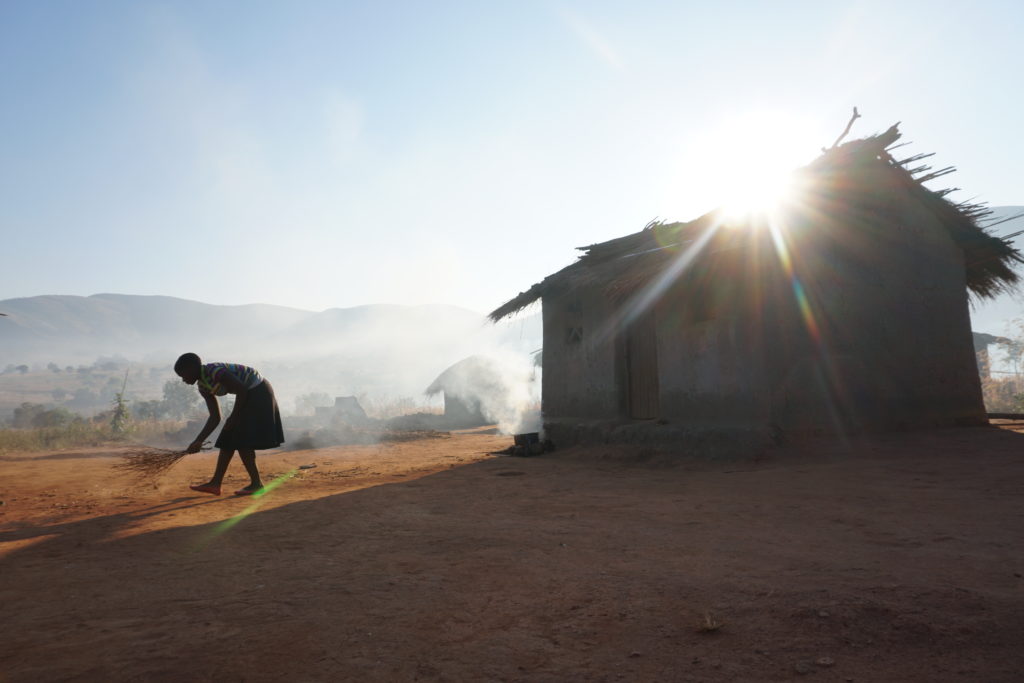
According to the Global Fund, more than an estimated 5 million girls around the world are at risk of never returning to school after leaving because of COVID-19 closures. And once out of school, they are more likely to face unplanned pregnancies, forced marriage, sexually transmitted diseases and gender-based violence³.
Given the many economic and social consequences of the pandemic, it’s more critical than ever that girls resume their education.
What can we do to mitigate the long-lasting effects of COVID-19 on education, while also strengthening our efforts to put girls at the forefront of their own futures?
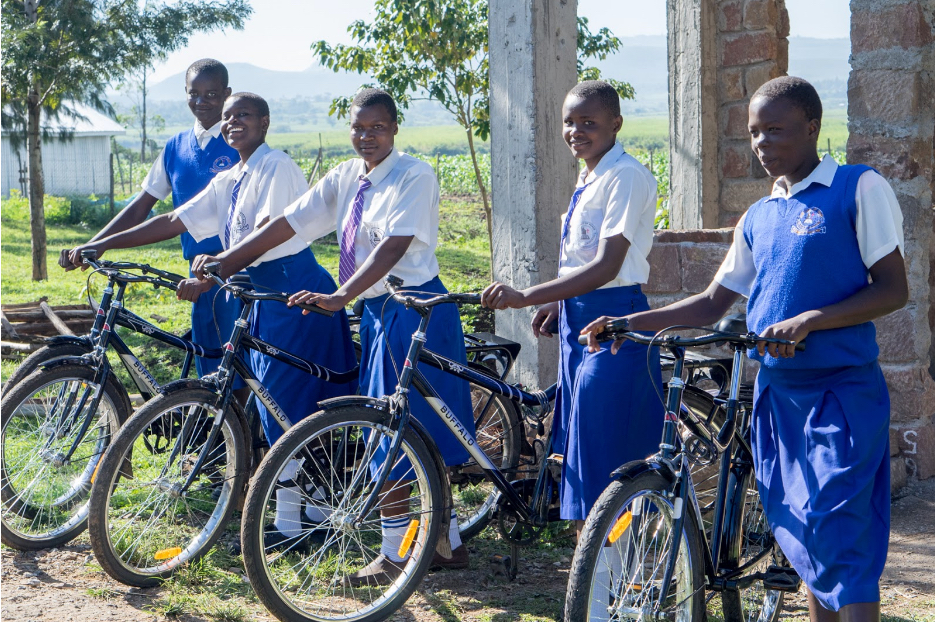
The Power of Mobility
Determined to fight the norm and create her own path forward, Stella re-enrolled 2 years after her daughter was born and resumed her daily 12-km walk to school in Western Kenya.
Stella began her day at 3 a.m. to care for her daughter and complete her chores—fetching water, tidying up and cleaning dishes—before setting off for school on foot.
Despite her ambitions and determination to make a better life for her family, Stella could not change the obstacles that remained: fear of violence and sexual overtures on the road to school, the exhaustion from rising early, walking 24 km a day, and the consequences of arriving late to class.
Then she received a simple tool that empowered her to change her life overnight: a bicycle.


Stella gained hours back in her day that she once spent walking, chores were finished more quickly, and she no longer feared the men on the road.
With the freedom that comes with two wheels, Stella finally has the ability to take charge of her own life and improve that of her daughter—something that had never before seemed possible.
With the bicycle, I feel safe. I cycle past the motorbike operator’s sheds, and I’m not worried about them stopping me.
Catalyst for Change
Since its beginnings in 2005, World Bicycle Relief has worked as a catalyst for change, mobilizing more than 700,000 people across 21 countries to thrive with life-changing bicycles.
Equipped with a purpose-designed Buffalo Bicycle, students, health workers and entrepreneurs in rural regions create long-term, sustainable opportunities for themselves, their families and entire communities.
Bicycles empower women and girls, in particular, to take charge of their lives. With access to bicycles, they unlock their potential and can focus on education, feel safer, obtain vital healthcare services and achieve greater earning potential. That’s why World Bicycle Relief aims to direct 70% of its Buffalo Bicycles to women and girls.
To evaluate the effectiveness of bicycle programming among adolescent girls’ education, World Bicycle Relief and Innovations for Poverty Action (IPA) conducted a randomized control trial that followed 2,471 girls from 100 schools in Zambia⁴.
The results were clear: Bicycles change everything.
The Wheels of Change study found that, with bicycles, girls’ dropouts decreased by 28%, absenteeism was reduced by 28%, punctuality increased by 66%, and they were 22% less likely to be harassed on the way to school. Girls also reported feeling more in control of the decisions affecting their lives and an improved self-image, leading to an increased sense of empowerment.
All of our hope rests on Mariangel. She is a smart girl and we want her to complete her education. This is our highest priority—the only way she will be able to thrive and also support her family. This bicycle is a godsend.
COVID-19’s Impact on Girls’ Education
When 13-year-old Mariangel of Colombia received a Buffalo Bicycle in early 2020, her family felt relieved that she would no longer face a long and dangerous trek to school and could pursue the education they knew she needed for a brighter future.
Then the pandemic struck, and her school, along with most others around the world, closed its doors, leaving millions of girls financially and technologically unable to access education.


Mariangel had a tough time at the beginning of lockdown. But she is one of the fortunate ones. She has taken her bicycle to safely collect assignments from school, while her parents use it to sell bread to pay the rent. Motivated to stay the course, Mariangel completed her 5th year with the highest grade.
There are no limitations to what a girl can do with a bicycle.
Empowerment on Two Wheels
A simple bicycle can play a crucial role in delivering girls back into classrooms quickly and safely when possible, while also empowering them to reach for the world beyond their own backyards.
Our goal should not be a return to the way things were but instead a renewed commitment to the way the world should be, a place where every girl can learn and lead.
With bicycles, girls are empowered to reimagine what’s possible for their futures, their families, and their world. And the world reimagines what’s possible for girls.
Will you help empower girls to reimagine their world?
¹ UNICEF | Girls’ Education: Gender equality in education benefits every child
² World Vision | COVID-19 Aftershocks: Access denied
³ Global Fund | Melissa’s Story: Out of school and at risk of HIV and violence during lockdown
⁴ World Bicycle Relief | The impact of girls’ education and empowerment outcomes in Zambia

